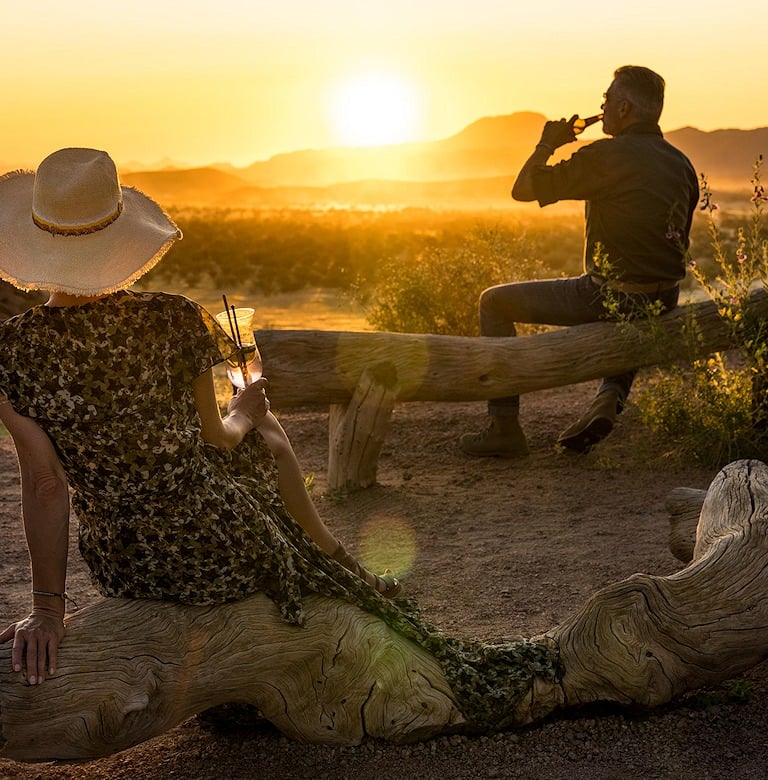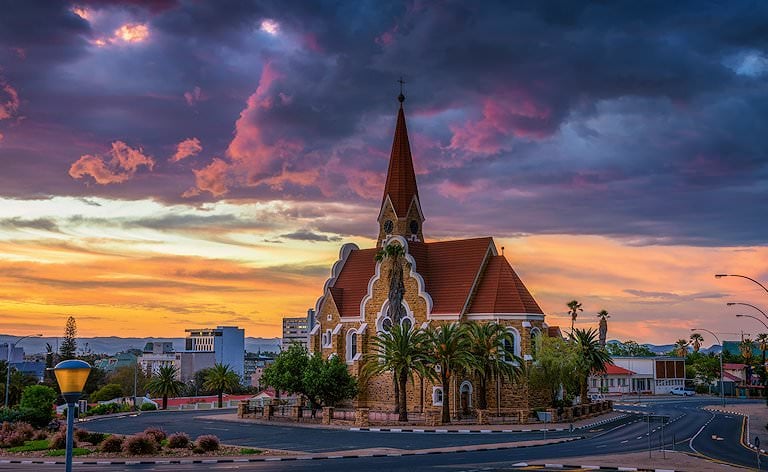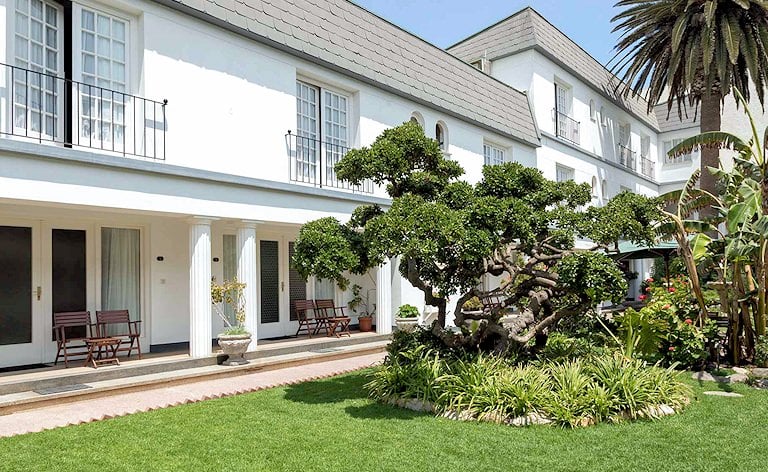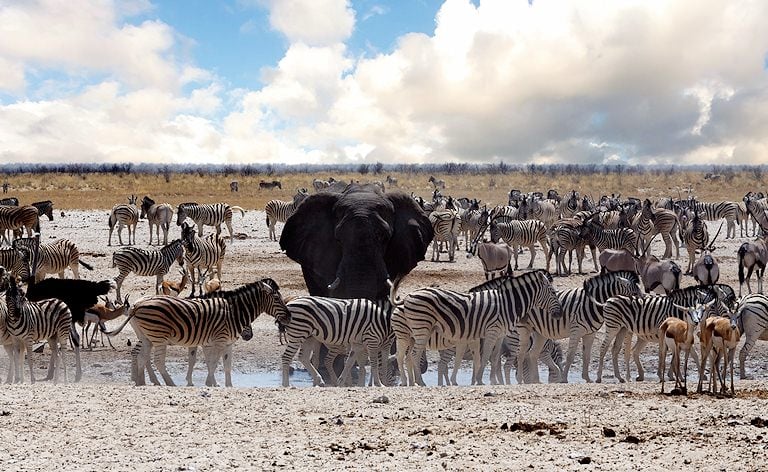Summary
This privately guided overland safari explores central and northern Namibia, from Windhoek and Swakopmund to the dramatic rocklands of Damaraland and the wildlife-rich reaches of Etosha National Park. Travel with a dedicated African Sky guide, enjoy scenic drives between regions, and experience changing desert, savanna and coastal ecosystems along the way.
- 1 Night Windhoek
- 2 Nights Swakopmund
- 1 Night Damaraland (Camp Kipwe)
- 2 Nights Etosha West (Dolomite Camp)
- 3 Nights Etosha Central & East (Okaukuejo & Namutoni)
Price Per Person Sharing From:
From: POA
The price can be reduced by substituting accommodations
What influences prices?
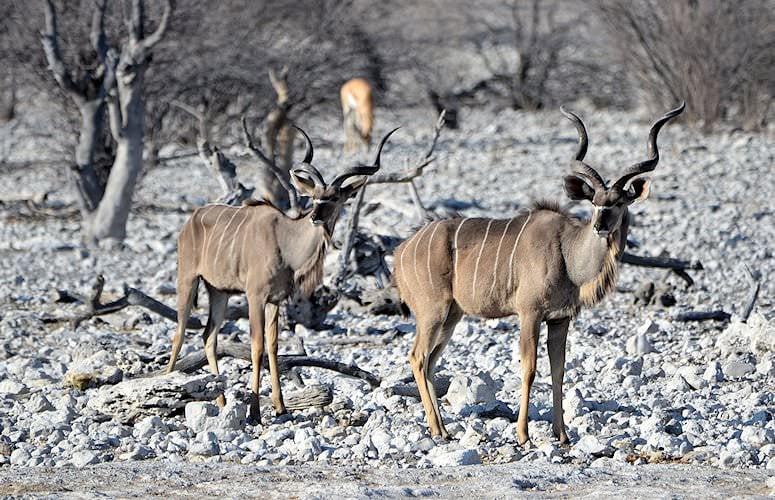

Safari Ref. Code
S43

Starting Date
Any Date

Starting Point
Johannesburg

Ending Point
Johannesburg

Customizable
The itinerary can be tailored to your needs

Type
Private Safari Tour

Accommodation Level
Personal & National Park Camps

Countries Visited
Private Namibia Tour Itinerary: 10 Day Northern Namibia
Day 1: Arrival / Windhoek
Highlights
- Meet your private African Sky guide on arrival in Johannesburg.
- Fly from Johannesburg to Windhoek, gateway to northern Namibia.
- Overnight at historic Hotel Heinitzburg overlooking the capital.
Guests are met and welcomed on arrival in Johannesburg by their African Sky guide. After clearing customs and immigration and completing formalities, you board a regional flight to Windhoek, Namibia’s small but bustling capital city set amongst rolling hills. On arrival, your guide will assist with vehicle arrangements and introduce you to the basics of Namibian travel, from climate and road conditions to local etiquette and safety.
The party then travels to your overnight accommodation at Hotel Heinitzburg, a historic castle-style property overlooking the city. Once checked in, you can unwind after your journey, relax beside the pool or enjoy views over Windhoek’s lights from the terrace. Depending on your arrival time, there may be an opportunity for a short orientation drive or a stroll in the gardens before dinner and a restful night.
Day 2: Windhoek / Swakopmund
Meals: Breakfast & Dinner
Highlights
- Scenic overland journey from Windhoek to the Atlantic coast.
- Pass Okahandja, Usakos and the dramatic “lunar landscape”.
- Arrive in Swakopmund and check in at centrally located Hansa Hotel.
After breakfast in Windhoek, you meet your African Sky guide at around 09:30 and depart Namibia’s only major city in a westerly direction. The journey initially follows the national B1 route north to Okahandja before turning toward the Atlantic. As the kilometers roll by, the landscape becomes increasingly arid, with low scrub and distant inselbergs hinting at the approach of the Namib Desert. A short stop in the small town of Usakos breaks the drive and offers a glimpse of everyday life in rural Namibia.
Continuing west, you skirt the Namib-Naukluft National Park and pass the famous “lunar landscape”, where ancient erosion has sculpted bizarre, moonlike hills. This area is also known for rare Welwitschia plants, some believed to be over a thousand years old. By mid-afternoon you reach the cool Atlantic air and the charming coastal resort of Swakopmund, where you check in at the centrally located Hansa Hotel and can spend the remainder of the day exploring at leisure.
Day 3: Swakopmund
Meals: Breakfast & Dinner
Highlights
- 4x4 adventure from Swakopmund and Walvis Bay into the Namib dunes.
- Explore Sandwich Harbour, a Ramsar-listed coastal wetland rich in birdlife.
- Experience the striking meeting point of towering dunes and the Atlantic Ocean.
Your excursion today is tide and weather dependent, and your guide will confirm the departure time in advance. Leaving Swakopmund, you drive south along the coast to Walvis Bay, passing large salt pans where sea water is harvested and a variety of shorebirds feed in the shallow lagoons. From Walvis Bay, sturdy 4x4 vehicles continue into the dune fields of the Namib, following sandy tracks toward the remote shores of Sandwich Harbour.
When conditions allow, the vehicles travel along the beach at the point where towering dunes drop dramatically into the Atlantic Ocean. Alternatively, when seas are rough the lagoon is viewed from high viewpoints in the surrounding dunes. Sandwich Harbour is recognized as a Ramsar wetland and supports significant numbers of flamingos, cormorants and other coastal species. A light lunch is included, with time for short walks, photography and taking in the remarkable meeting of ocean and desert before returning to Swakopmund in the afternoon.
Day 4: Swakopmund / Damaraland
Meals: Breakfast & Dinner
Highlights
- Drive the remote Skeleton Coast along the historic salt road.
- Visit Cape Cross, site of Diogo Cão’s 15th-century stone cross.
- View one of the world’s largest Cape fur seal colonies at close range.
After a final breakfast in Swakopmund, you leave the town behind and travel north along the coastal “salt road” toward the legendary Skeleton Coast. This stark region, where cold Atlantic swells meet the desert, is one of the most remote coastlines in Africa. Your first major stop is Cape Cross, where Portuguese explorer Diogo Cão erected a stone cross in the 1480s while searching for a sea route to India. A replica of the original padrão now stands at the site as a national monument.
Cape Cross is also home to one of the world’s largest Cape fur seal colonies, with tens of thousands of animals congregating on the rocky shore. After time to watch the bustling seal activity, the journey turns inland toward the rocky landscapes of Damaraland. Vegetation gradually becomes more prominent and sightings of springbok, gemsbok and kudu are possible. You arrive at Camp Kipwe in the late afternoon, where you can settle into your stone-built bungalow and enjoy sunset views over the granite outcrops.
Day 5-6: Damaraland / Etosha National Park
Meals: Breakfast & Dinner
Highlights
- Enter Etosha National Park through the lesser-visited Galton Gate.
- Stay at Dolomite Camp in a remote western sector of the park.
- Enjoy morning and afternoon game drives to productive waterholes.
After breakfast, the tour continues eastwards through increasingly wooded terrain and dramatic open plains toward Etosha National Park, entering via Galton Gate. Etosha ranks among Southern Africa’s premier wildlife destinations and is centered on the vast Etosha Pan, a saline depression that dominates the northern portion of the park. In good rainfall years, shallow water draws flamingos and other waterbirds; for much of the year, however, the pan remains dry and shimmers white under the sun. The surrounding mopane woodland and grassland support large herds of plains game and a healthy predator population.
Your base for the next two nights is Dolomite Camp in the remote western section of the park, an area that was only opened to the general public relatively recently. Morning and afternoon game drives with your guide explore waterholes and open savanna in search of species like springbok, zebra, giraffe, lion and, with luck, black rhino. Evenings are spent back at camp, relaxing on the elevated decks and absorbing the sense of wilderness.
Day 7-9: Etosha National Park
Meals: Breakfast & Dinner
Highlights
- Traverse Etosha from west to east via Okaukuejo and Namutoni.
- Watch wildlife congregate at a series of renowned waterholes.
- Spend evenings at floodlit waterholes, often visited by black rhino.
Over the next three days you gradually traverse Etosha from west to east, spending time in both the Okaukuejo and Namutoni regions. This central belt of the park is famous for its network of waterholes, which act as magnets for wildlife during the long dry season. Your guide times game drives to coincide with peak activity at the springs, offering excellent chances of encountering elephant, wildebeest, jackal and large mixed herds of antelope. Lions are regularly seen in the area, and cheetah or leopard may also be spotted along the fringes of the pan.
In the late afternoons and evenings you have the option of sitting at the famous floodlit waterholes inside the rest camps, where black rhino and other nocturnal species often appear after dark. The contrast between the white pan, acacia woodland and open grassland provides varied photographic opportunities. Comfortably accommodated in the national park camps, you fall asleep each night to the distant calls of hyena and lion echoing across the savanna.
Day 10: Departure
Overnight: None
Meals: Breakfast
Highlights
- Enjoy a final game drive in Etosha National Park.
- Scenic return drive from Etosha to Windhoek with your guide.
- Connect in Windhoek for your regional flight back to Johannesburg.
After a final early morning game drive or a last visit to one of Etosha’s busy waterholes, you depart the park through its eastern Von Lindequist Gate and begin the journey south to Windhoek. The route passes small farming settlements and stretches of open bushveld, with time for comfort stops and a relaxed picnic-style lunch en route. Your guide uses the drive to recap the highlights of your safari and answer any remaining questions about Namibia’s wildlife, cultures and conservation areas.
On arrival in Windhoek, you connect with a regional flight back to Johannesburg. At O.R. Tambo International Airport you are either assisted with check-in for onward travel or transferred to a pre-arranged hotel in the city. Your Northern Namibia Private Overland Tour ends with a head full of memories: sweeping desert vistas, the cool Atlantic coast, distinctive Damaraland landscapes and close-up encounters with Etosha’s remarkable game.
Included
Accommodation:
- 1 Night Hotel Heinitzburg
- 2 Nights Hansa Hotel
- 1 Night Camp Kipwe
- 2 Night Dolomite Camp
- 2 Nights Okaukuejo Camp
- 1 Night Namutoni Camp
Guides:
- Private African Sky Guide: From Day 1–10
Vehicles:
- Private Air Conditioned Vehicle: From Day 1–10
Flights:
- Johannesburg to Windhoek Round Trip
Transfers:
- All overland road transfers by private guide vehicle (Day 1–10)
- Private transfer from O.R. Tambo Airport to Johannesburg / Pretoria (Day 10)
Activities & Entrance:
- All Activities Included in the Itinerary, Unless Stated as Optional
- All Entrance Fees to Places Mentioned in the Itinerary, Unless Stated as Optional
Additional Inclusions:
- Tourism Levy
- All Applicable Taxes
- All Park Fees, Where Applicable
Excluded
Excluded:
- International Airfare (To and From South Africa)
- Personal and Medical Insurance
- Drinks
- Gratuities
10 Day Northern Namibia Private Overland Tour
 Plan
Plan
